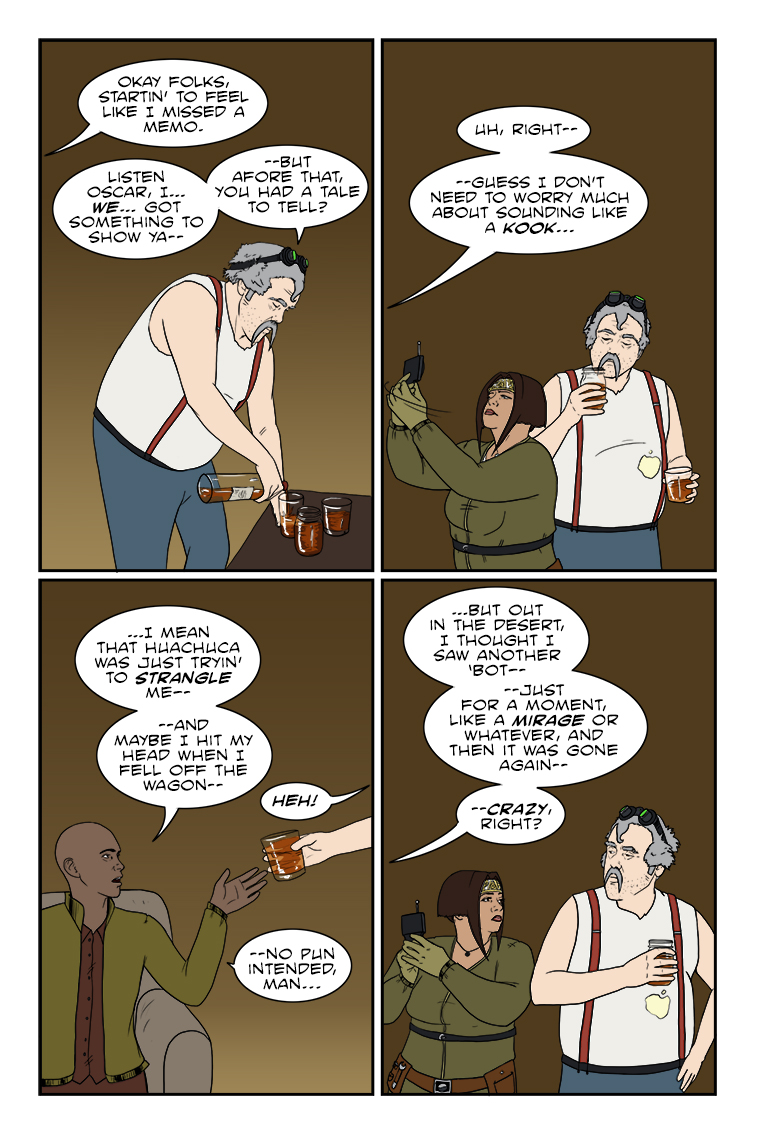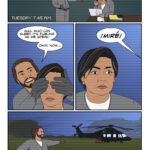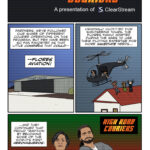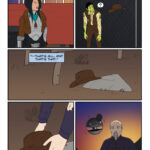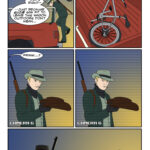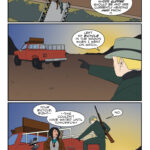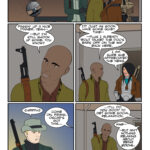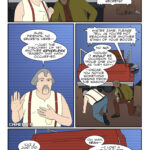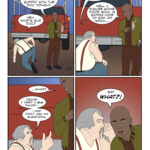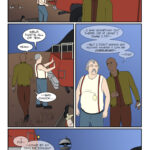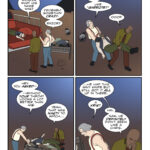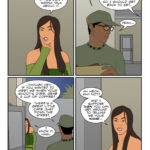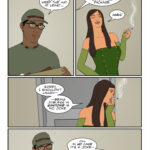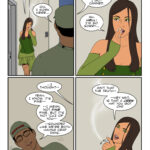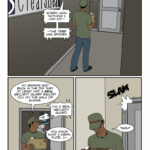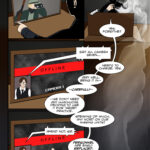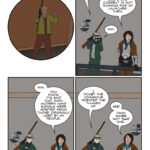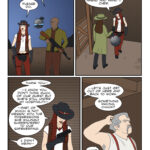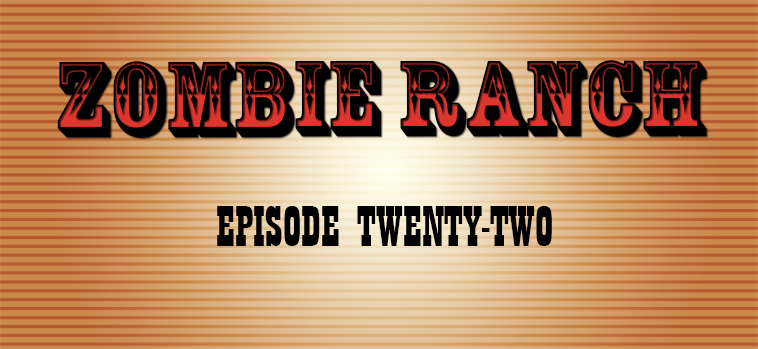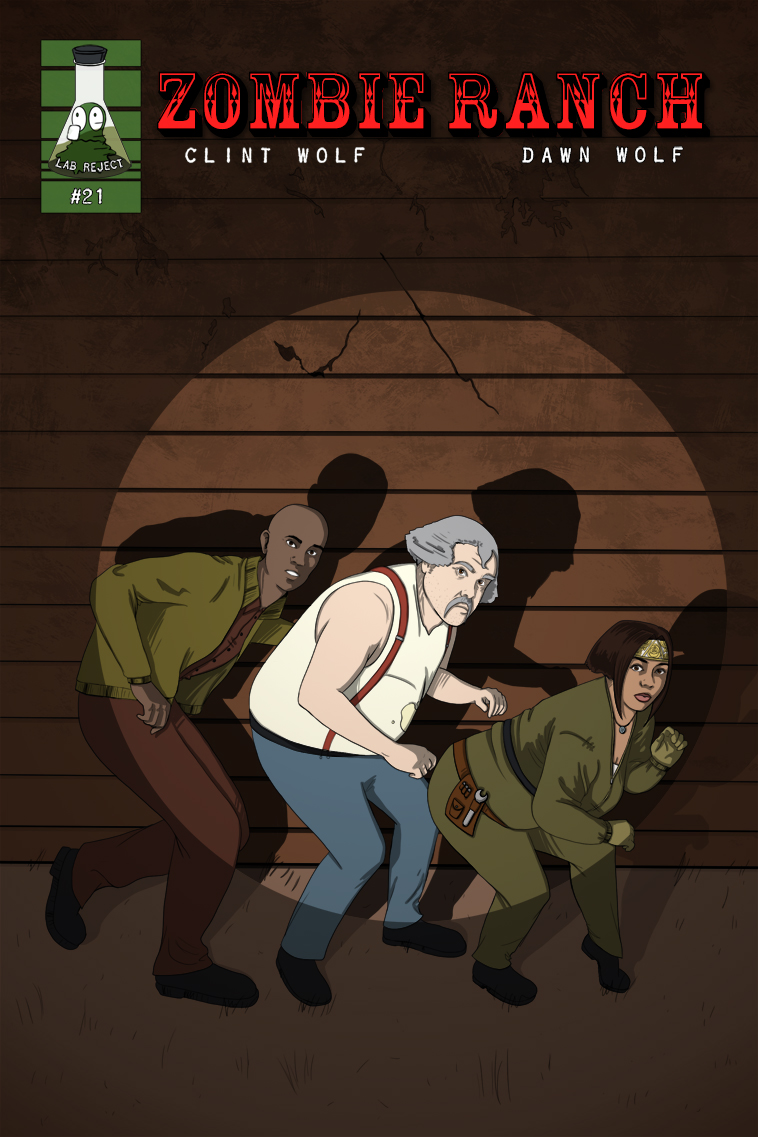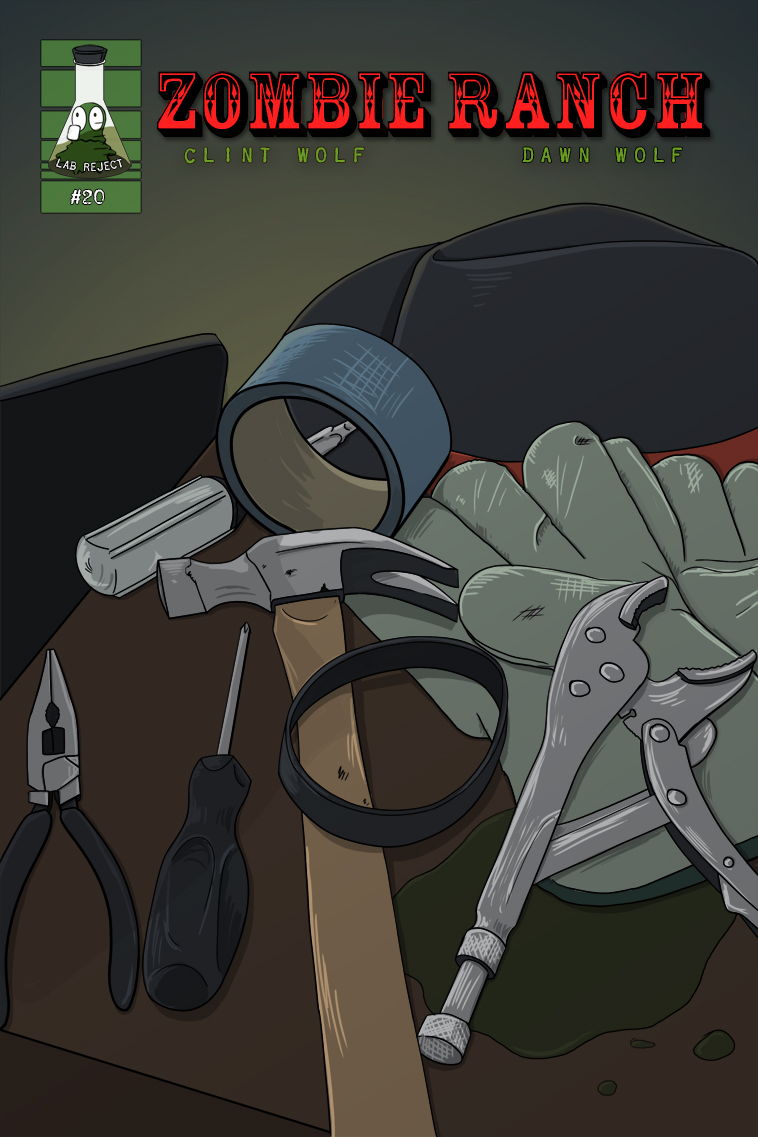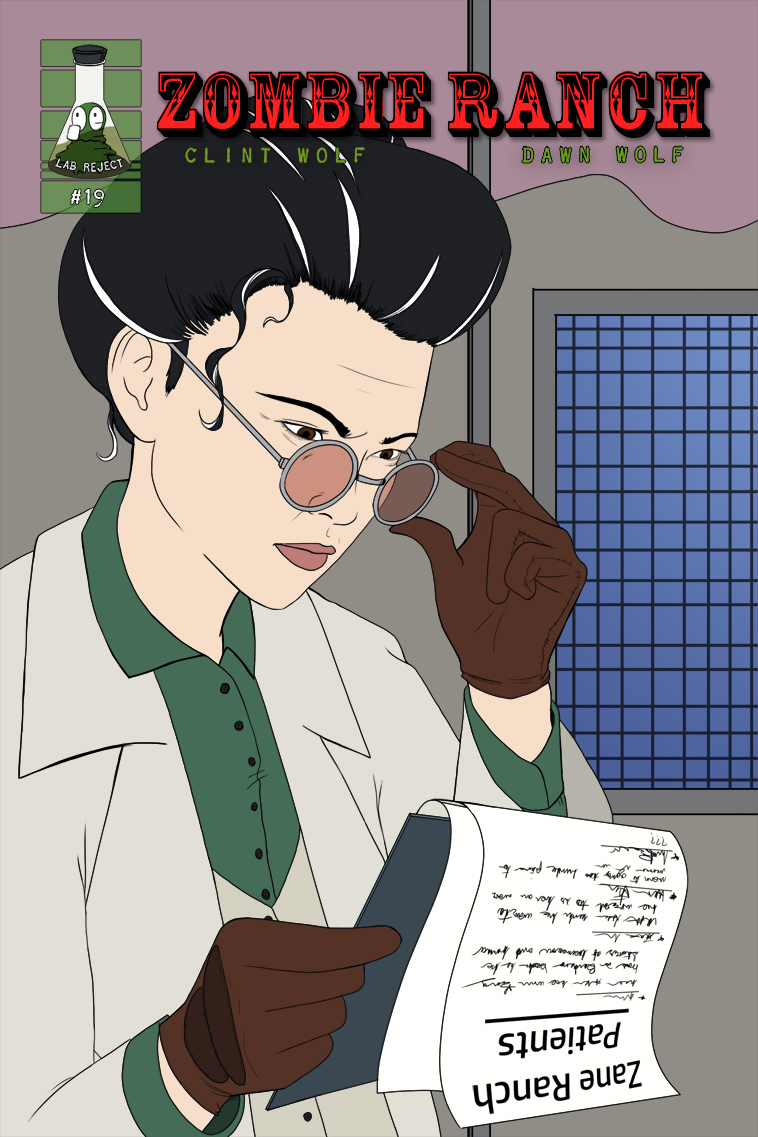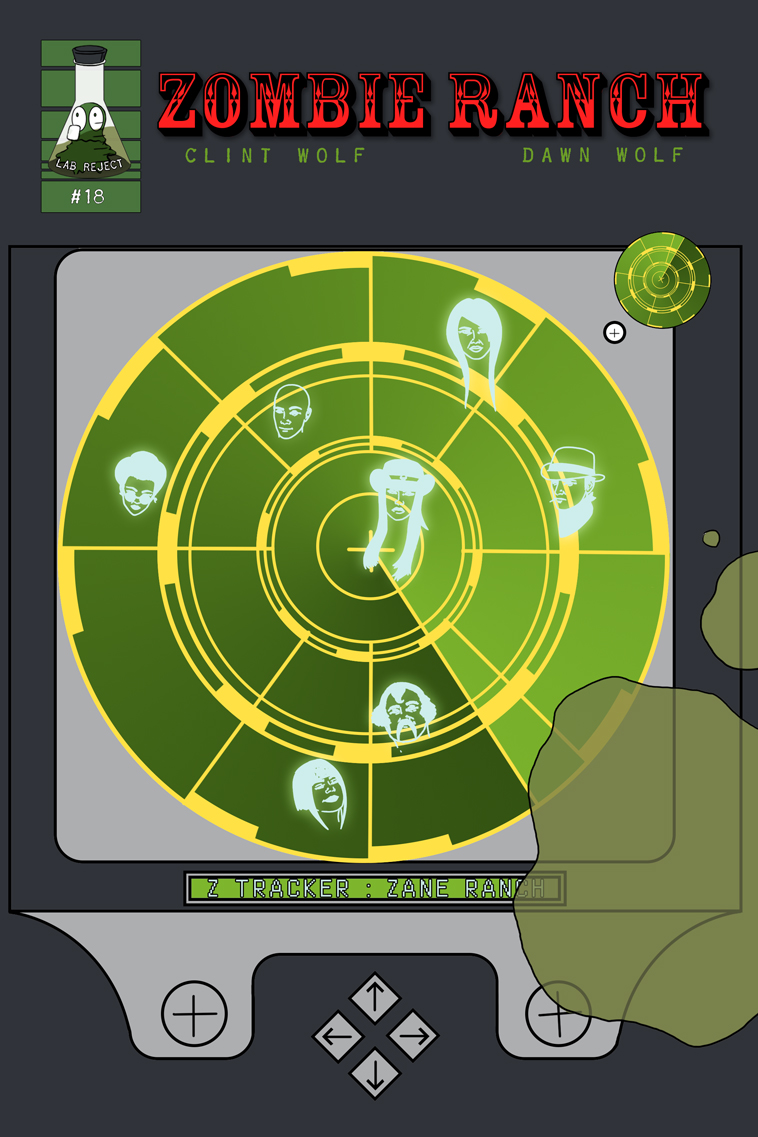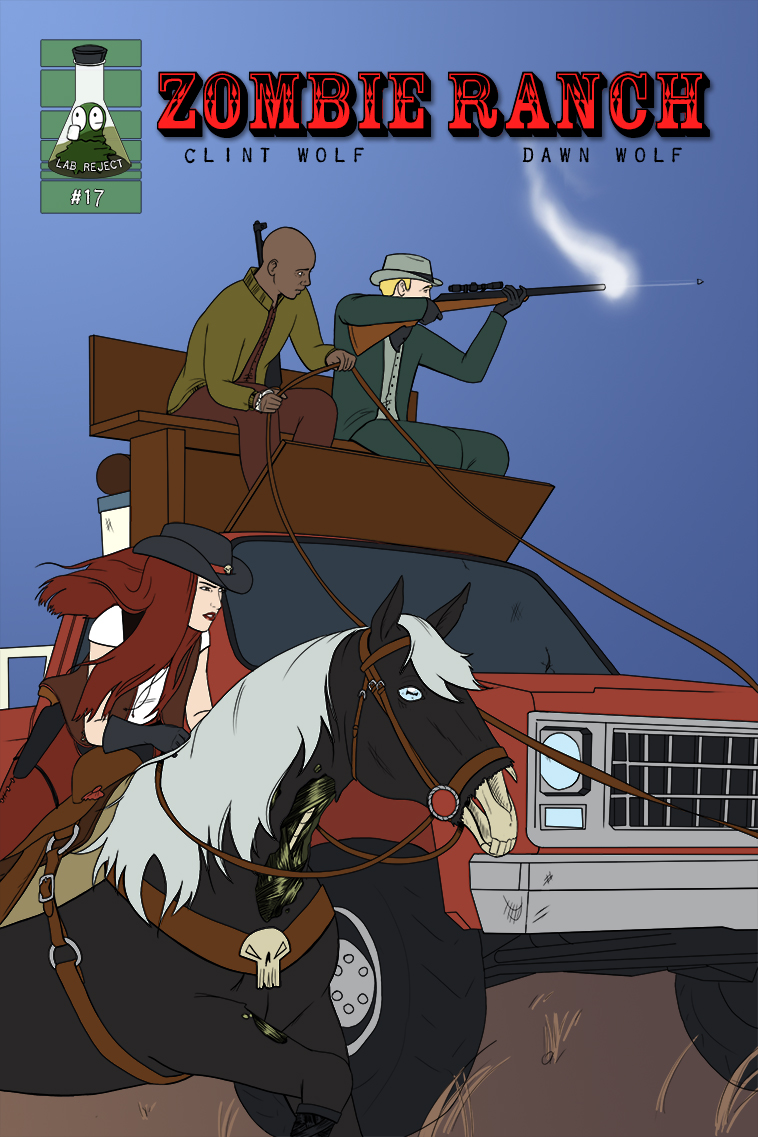Other comic authors, and aspiring comic authors, sometimes wonder about the topic of pacing their story. Occasionally they seek advice about it. Once in a very great while, I’m asked to give that advice.
This is not really one of those times, I’m just going to weigh in without anyone having specifically asked my opinion. I’ve
written before about the importance of keeping a balance between a satisfying single installment and the overall arc of the story being told. I think it’s absolutely crucial to a long form webcomic, particularly one like ours which updates once a week. I don’t expect you’ll be spending every waking moment between Wednesdays in a state of edge-of-your-seat suspense, but I definitely hope to keep you looking forwards to next time, and caring about where the next page updates takes you.
In the old days of the newspaper serials, it was all pretty blatant. The last panel would have something like the protagonist turning with a shocked look and shouting “YOU?!” while some silhouette in the foreground held a gun upon them. Tune in next time. And then next time, the first panel would start with a (re)caption — “While investigating the submarine base of Dr. Morbis, Sato is suddenly confronted by an old enemy!”. Three panels later the old enemy, revealed as Fang the Funkadelic, would drop the news that he’d taken pretty Miss Mingle as his hostage, and the cycle would start anew.
Long form webcomics usually get to breathe a bit more in this sense, but I still like to play around with the idea of connecting the previous comic to the last in some way beyond just a Back and Next button. I feel as though it’s worth the effort; that even if a reader doesn’t consciously make the connections, their subconscious will help carry the narrative.
I could also be totally incorrect and not a little full of myself, but that’s my theory. I do get a lot of comments on
Zombie Ranch from people saying they were compelled to keep reading, often sometimes without knowing why (such as the rough beginnings). Is that a function of my clever lil’ transition efforts? Well, if nothing else it makes the writing more fun for me.
Sometimes it’s a visual, such as the ending the last panel
here with a grinning cartoony zombie, and starting the first panel
here with the much more glum reality. Sometimes it’s combining similar visuals with similar words, such as
here to
here, or what I’ve put together for our latest two comics where smoke defines the switch between two physically distant locations.
The flow and rhythm of the words are also very important to me. I nudge around my drafts of the script until I can achieve something which sounds good to me in recitation. Samuel Taylor Coleridge, a man who wrote my most favorite poem of all time in his
Rime of the Ancient Mariner, once declared that poetry was not just the best words, but “the best words in the best order”.
I realize comics writing is not really poetry, since for one thing you have accompanying imagery to pick up your sensory slack, but there are certain similarities in the idea of economy of expression. You just don’t have the elbow room a prose writer does to wax at length on topics, you need to get your points across in a more condensed form. And the rhythm, the order, is still important. The greatest speeches in history have an undeniable flow to them that grabs attention and stirs both intellect and emotion. Even prose writers are well advised to pay heed to the rhythm and quality, especially in the beginnings of their tales when they’re first knocking at your door for your time and attention. Dickens certainly knew it:
“IT WAS the best of times, it was the worst of times, it was the age of wisdom, it was the age of foolishness, it was the epoch of belief, it was the epoch of incredulity, it was the season of Light, it was the season of Darkness, it was the spring of hope, it was the winter of despair, we had everything before us, we had nothing before us, we were all going direct to Heaven, we were all going direct the other way- in short, the period was so far like the present period, that some of its noisiest authorities insisted on its being received, for good or for evil, in the superlative degree of comparison only.”
He could have just as easily written “In the time just before the French revolution, things were pretty chaotic and contradictory… which actually isn’t too far off from the way things are now”, but that might not have been quite so memorable. Even if you don’t get his meaning right away, the flow is still there, carrying you along, inviting you to come visit Somewhere Else and return, eventually, more fulfilled than when you left.
Or I could use a much more modern and simpler example. Watch the original trilogy of the Star Wars films and see how effective the scene transitions are, especially compared to the newer prequels. Part of the reason I feel the prequels lose me is they lack that underlying sense of rhythm, killing scenes too abruptly or letting them linger too long even with John Williams doing his best to still provide the audio cues. Whatever your feelings on Ewoks, I do feel that
Return of the Jedi managed to quite effectively juggle an epic battle taking place in three different places at once in a way
Phantom Menace did not, and a lot of that, again, I ascribe to the rhythm.
“You… (ominous music)… like your father… (music builds)… are now… MINE!” (crash of music, jump cut to other battle in progress)
When done right, there’s this exhilarated sense of being swept off your feet and carried forwards, unable to look away/put the book down/stop listening to the speaker. You have become lost in the transitions.
I can’t say I’ve mastered it. I can’t say, truthfully, that I even feel like much more than an apprentice. But I keep at it because I feel like it helps and benefits the work, whether or not the audience takes conscious notice.
Of course there’s the other kind of becoming lost in transitions where you scene jump so poorly the audience has no clue where they are. I hope I’ve avoided that for the most part, and think, again, that the connector elements can help out. The answer lies with the majority of the readership, but I take some pride in the lack of complaint I’ve heard about the opening pages of Episode 2, where (with Dawn’s talented assistance, of course!) I really pulled some shenanigans with time, space, and even the very format of the information being delivered.
Then again it’s possible the people who hated it just up and left, and I’ll never know how many of those there were. Possibly many thousands more than those it worked for. But any time someone tells me they start our archive and feel compelled (sometimes against their intentions) to finish it, I like to think part of the answer lies in that thread I try to stitch between each and every page — sometimes obvious, sometimes barely perceivable even to myself. But in the sharing of a story, I feel it’s part of the crucial conveyance that keeps the fantasy alive.








